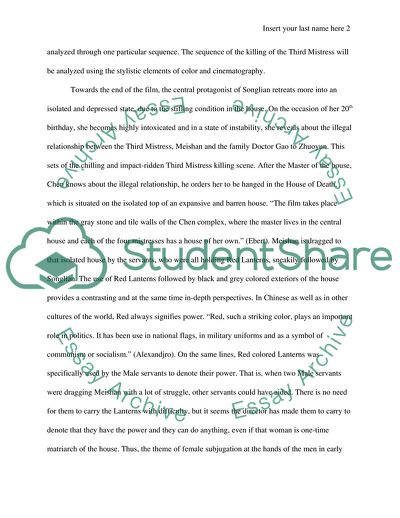Cite this document
(Contemporary Chinese Cinema: Raise the Red Lantern Movie Review Example | Topics and Well Written Essays - 1250 words, n.d.)
Contemporary Chinese Cinema: Raise the Red Lantern Movie Review Example | Topics and Well Written Essays - 1250 words. https://studentshare.org/visual-arts-film-studies/1784040-contemporary-chinese-cinema-raise-the-red-lantern
Contemporary Chinese Cinema: Raise the Red Lantern Movie Review Example | Topics and Well Written Essays - 1250 words. https://studentshare.org/visual-arts-film-studies/1784040-contemporary-chinese-cinema-raise-the-red-lantern
(Contemporary Chinese Cinema: Raise the Red Lantern Movie Review Example | Topics and Well Written Essays - 1250 Words)
Contemporary Chinese Cinema: Raise the Red Lantern Movie Review Example | Topics and Well Written Essays - 1250 Words. https://studentshare.org/visual-arts-film-studies/1784040-contemporary-chinese-cinema-raise-the-red-lantern.
Contemporary Chinese Cinema: Raise the Red Lantern Movie Review Example | Topics and Well Written Essays - 1250 Words. https://studentshare.org/visual-arts-film-studies/1784040-contemporary-chinese-cinema-raise-the-red-lantern.
“Contemporary Chinese Cinema: Raise the Red Lantern Movie Review Example | Topics and Well Written Essays - 1250 Words”. https://studentshare.org/visual-arts-film-studies/1784040-contemporary-chinese-cinema-raise-the-red-lantern.


